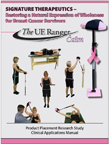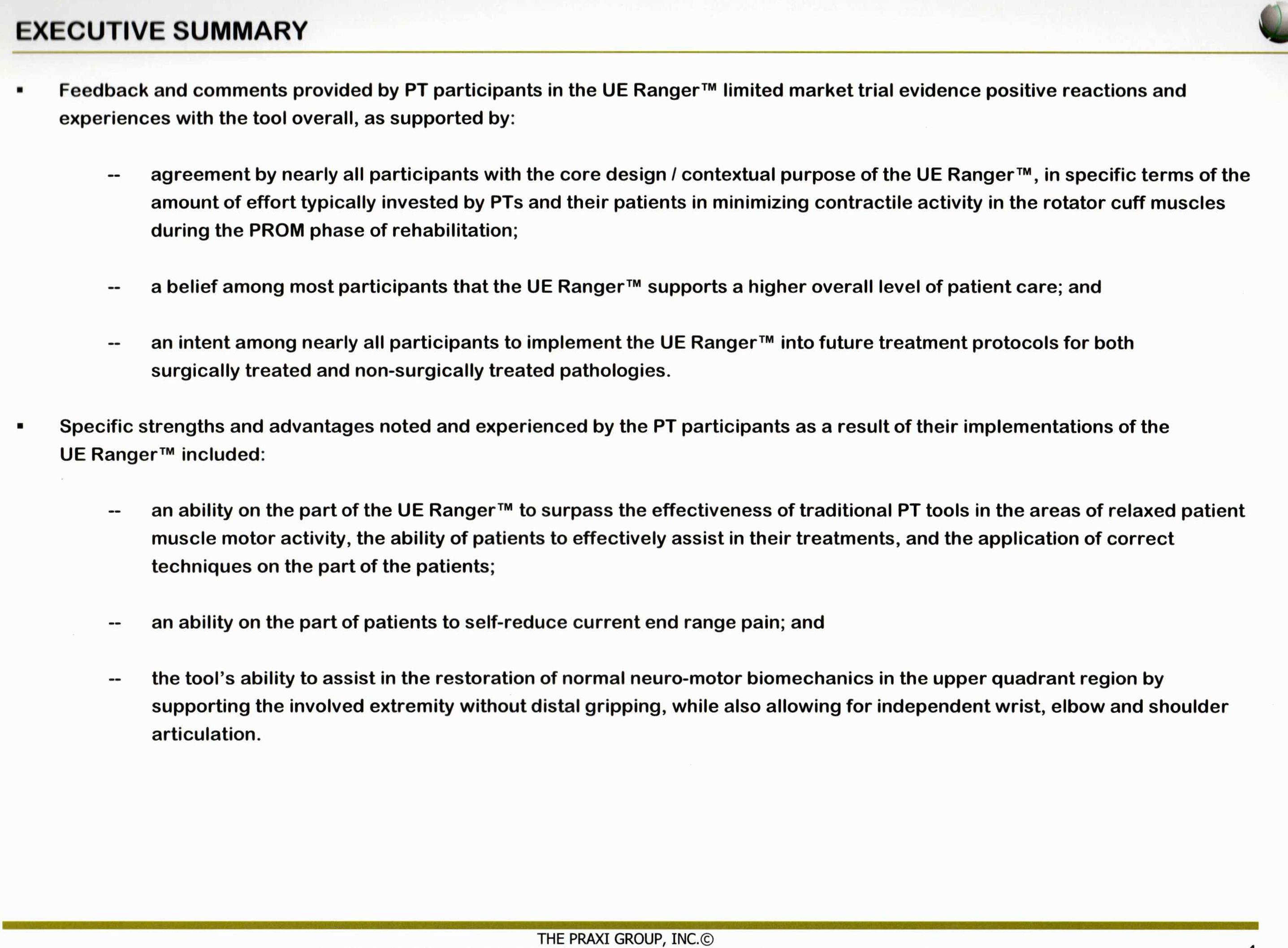Research
It is the highest goal of Rehab Innovations to ensure our products fulfill the intention of their design. In addition to clinical observation and application findings, we welcome the examination of our claims through independent research. We encourage discussion from persons passionate about advancing the professions’ efforts to deliver the highest quality of care possible. Below are two studies we are excited to offer and foster further discussions.
In two independent research studies, the UE Ranger has demonstrated the capacity to advance the level of care offered to patients recovering from pathologies affecting the upper extremity.
University of Kentucky Study
Muir T, Mair SD, Nitz AJ, Bush HM, Uhl TL. Muscle activation levels during early postoperative rehabilitation exercises in SLAP repaired patients, a pilot study. Shoulder & Elbow. 2012;4:219-227.
Click Here to visit the website about the study.
Click Here to view the study results.
From our perspective with respect to the University of Kentucky study, the results offer evidence of: (see the blue box below)
Cincinnati SportsMedicine Research and Education Foundation
Michael A. McCormack, Jr, PT MHS, ATC; Thomas N. Lindenfeld, MD; Sue D. Barber-Westin, BS. Comparing two devices used to regain full range of motion following arthroscopic subacromial decompression for shoulder impingement. Athletic Training & Sports Health Care. January/February 2012; Volume 4, Issue 1:21-28
Click Here to visit the website about the study.
Click Here to view the study results.
The safe capacity associated with implementing the UE Ranger in the early acute PROM phase as an alternative to the difficulties, potential negative consequences and limited functional capacities associated with pendulums, and forward bows.
Integrates neuromuscular facilitation into functionally efficient motor control
- - Persons with lower back pain or orthostatic hypotension are going to be fearful and/or physiologically on guard, thus unable to relax and therefore complete the effort with an aggravated spine and a reflexively guarded shoulder.
- - The postural alignment and execution of pendulums offers potential pain relief through the distraction forces on the gleno-humeral joint. However, these forces become higher than the intended amount and result in an unintended strain to the repaired joints’ soft tissues resulting in a reflexively guarded shoulder.

The UE Ranger Calm® Product Placement - Pilot Study
View Study
The below is a summary of a Needs Assessment Study done by the Praxi Group.

"I’ve used this with patients that I have either manipulated the shoulder for capsulitis or performed an arthroscopic capsular release. For this, as well as my cuff problems, it has been a very cost-effective and useful appliance for me to use. My experience, has been uniformly pleasing in terms of accelerating the rehab while protecting the repair."
R. Michael Gross, M.D. Orthopedic Surgeon
"I have used the UE Ranger for several years in the clinic with our post-operative patients for active assistive range of motion and have found it not only very useful but superior to using a cane or stick allowing better ease of use by patients in both elevation and rotational applications. Recently I have been using the UE Ranger to assist my patients in gaining against gravity elevation following rotator cuff repair and arthroplasty. By mounting the UE Ranger against the wall, it has allowed patients to lever their extremity into greater levels of UE ROM minimizing scapular compensation. This has been an additional benefit to the patients in our clinic and really made a difference in their rehabilitation. The new research quantifying the muscular activity during its use provides additional support and validation for this excellent product."
Todd S. Ellenbecker, DPT, MS, SCS, OCS, CSCS
